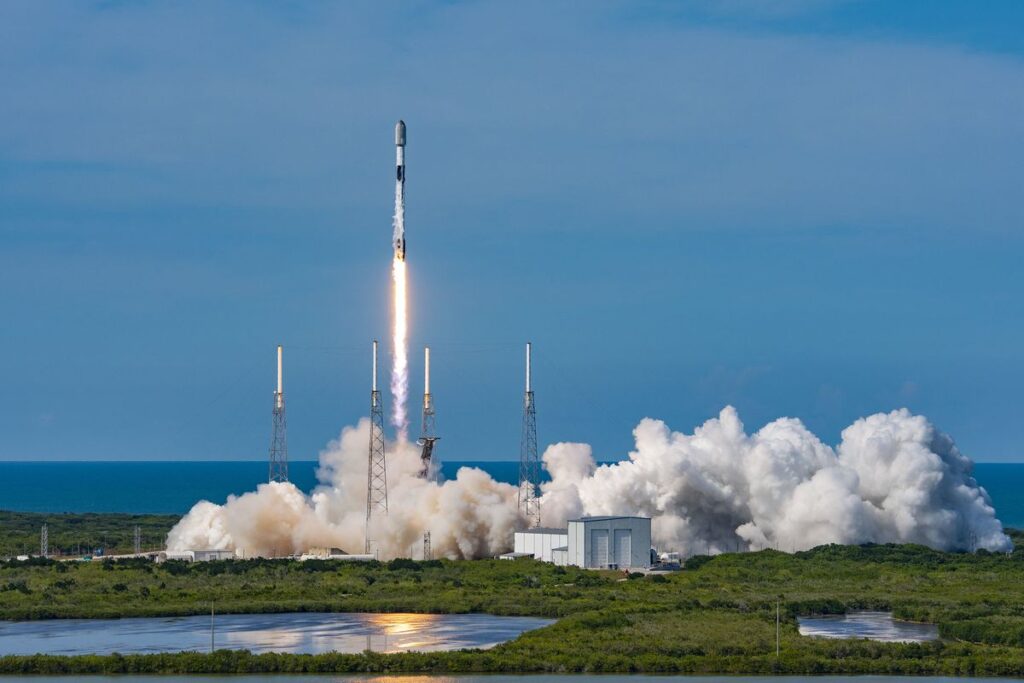SpaceX’s Starship, the largest and most powerful rocket ever built, launched from the Starbase facility in Boca Chica at 6:55 PM IST on Thursday. Unlike its prior flights, this one didn’t end in explosion; it successfully inserted the spacecraft into orbit. However, SpaceX later confirmed the loss of the spacecraft.
The Starship rocket surpassed the distance achieved in its previous two flights, but SpaceX reported a loss of communication during reentry into Earth’s atmosphere. Originally slated to splash down in the Indian Ocean, it likely disintegrated or broke apart under the stress of reentry.
Also READ: 8 railway stations renamed by Maharashtra Cabinet
While the outcome of the third test flight may not be viewed as a total failure, it accomplished numerous mission objectives, marking a significant advancement for the spacecraft and launch system. Elon Musk sees this as a crucial step towards using the technology to propel humanity to the Moon.
SpaceX’s Agile Approach to Innovation
Unlike traditional government space agencies, SpaceX adopts a startup-like philosophy of embracing failure as a means to iterate and improve. Despite two previous explosions, Elon Musk and his team remained undeterred, believing in the value of learning from mistakes to refine future attempts. The relative success of Thursday’s launch signifies a significant leap forward for Starship, bringing it closer to fulfilling its potential for actual space exploration missions following a tumultuous series of test launches.
Also READ: सुप्रीम कोर्ट ने एसबीआई को बॉन्ड नंबर बताने का आदेश दिया
SpaceX Starship: Pioneering the Future of Space Transportation
The Starship spacecraft and Super Heavy rocket, collectively known as Starship, embody SpaceX’s next-generation launch systems, designed for transporting astronauts and cargo to Earth’s orbit, the Moon, and potentially Mars. Pending successful testing, Starship holds the promise of becoming humanity’s most potent launch system, boasting the capacity to carry payloads of up to 150 metric tonnes in reusable mode and 250 metric tonnes in expendable mode, according to SpaceX. The Super Heavy booster acts as Starship’s initial stage, with SpaceX aiming for full reusability, allowing it to return to the launch site after each mission.
Also READ: 18 OTT, 19 वेबसाइट, 10 ऐप्स समेत 57 सोशल मीडिया हैंडल्स पर लगा बैन
Starship Delays Pose Potential Setback for NASA’s Artemis 3 Lunar Mission
The development and potential delays in achieving flight-readiness for SpaceX’s Starship could have significant implications for human space exploration. NASA’s Artemis 3 mission, aiming to be the first to land astronauts on the Moon since Apollo 17 in 1972, might face delays if Starship isn’t ready in time. Selected by NASA in 2021 to develop the first commercial human lander for lunar missions, SpaceX’s Starship variant will transport astronauts to and from the lunar surface during Artemis 3. While NASA’s Orion spacecraft and Space Launch System (SLS) have undergone testing, the integration of Starship into the mission plan is pivotal. Thursday’s relative success, following previous launch setbacks, marks a crucial step towards Starship’s readiness for Artemis 3.











More Stories
India’s Active Covid-19 Cases Rise Above 2,700; Delhi Records First Fatality
Pak PM: India Fired Brahmos Before Our Retaliation
देहरादून: सूर्यधार रोड पर भिड़ीं गाड़ियां, शख्स को कुचलने की कोशिश; 9 गिरफ्तार